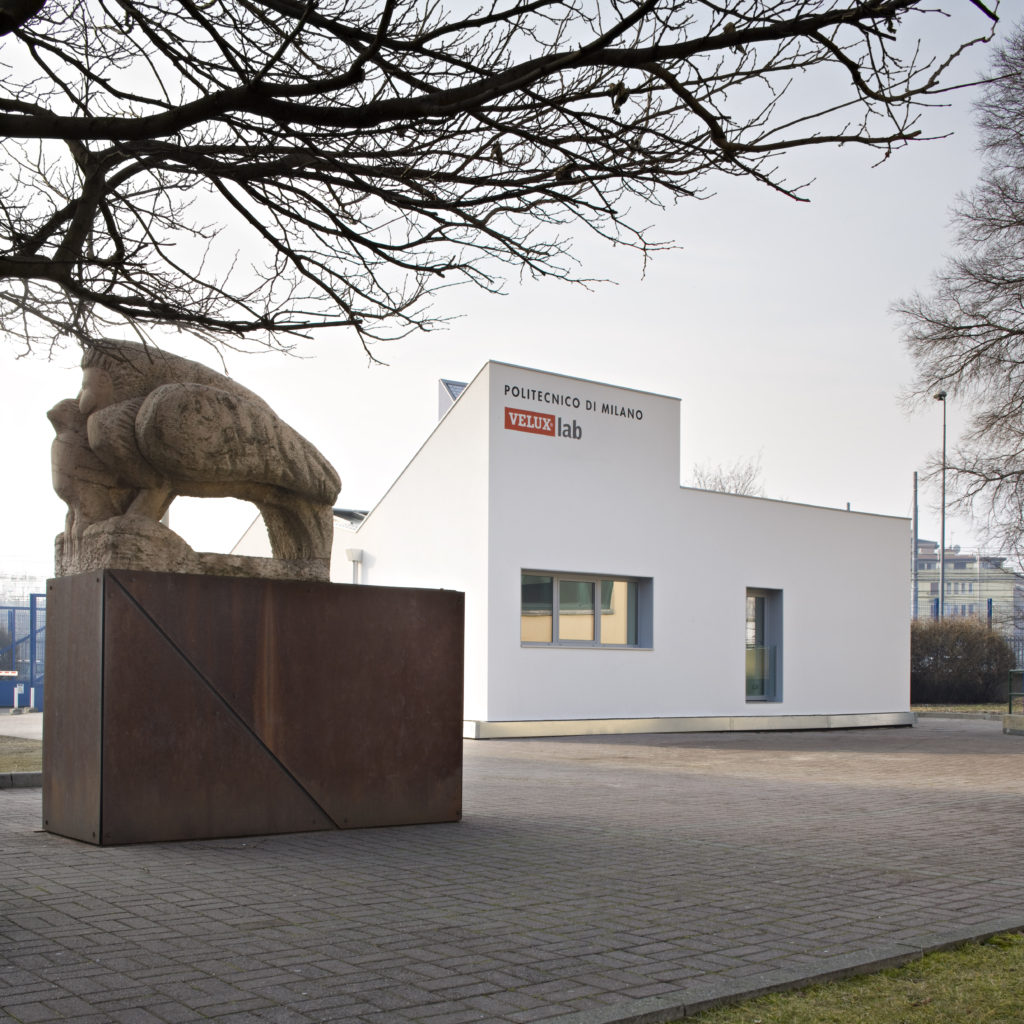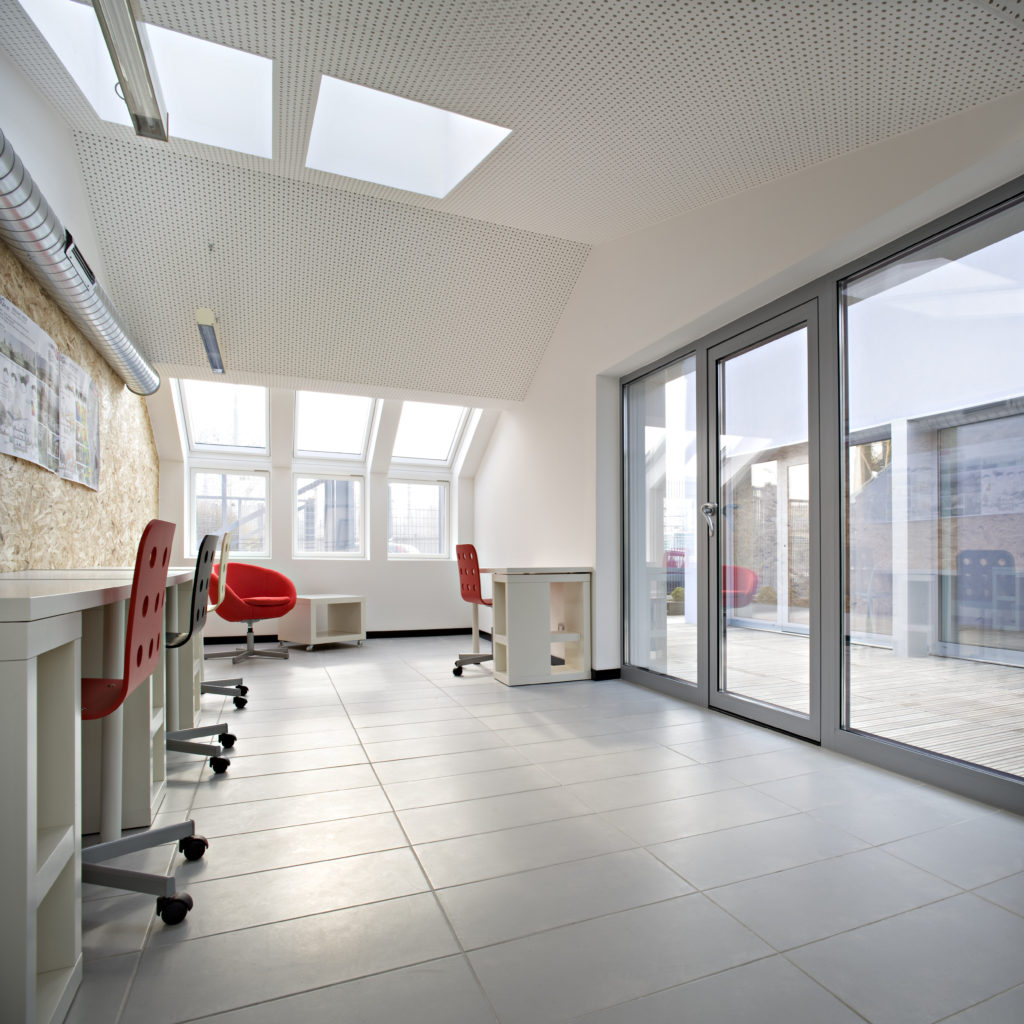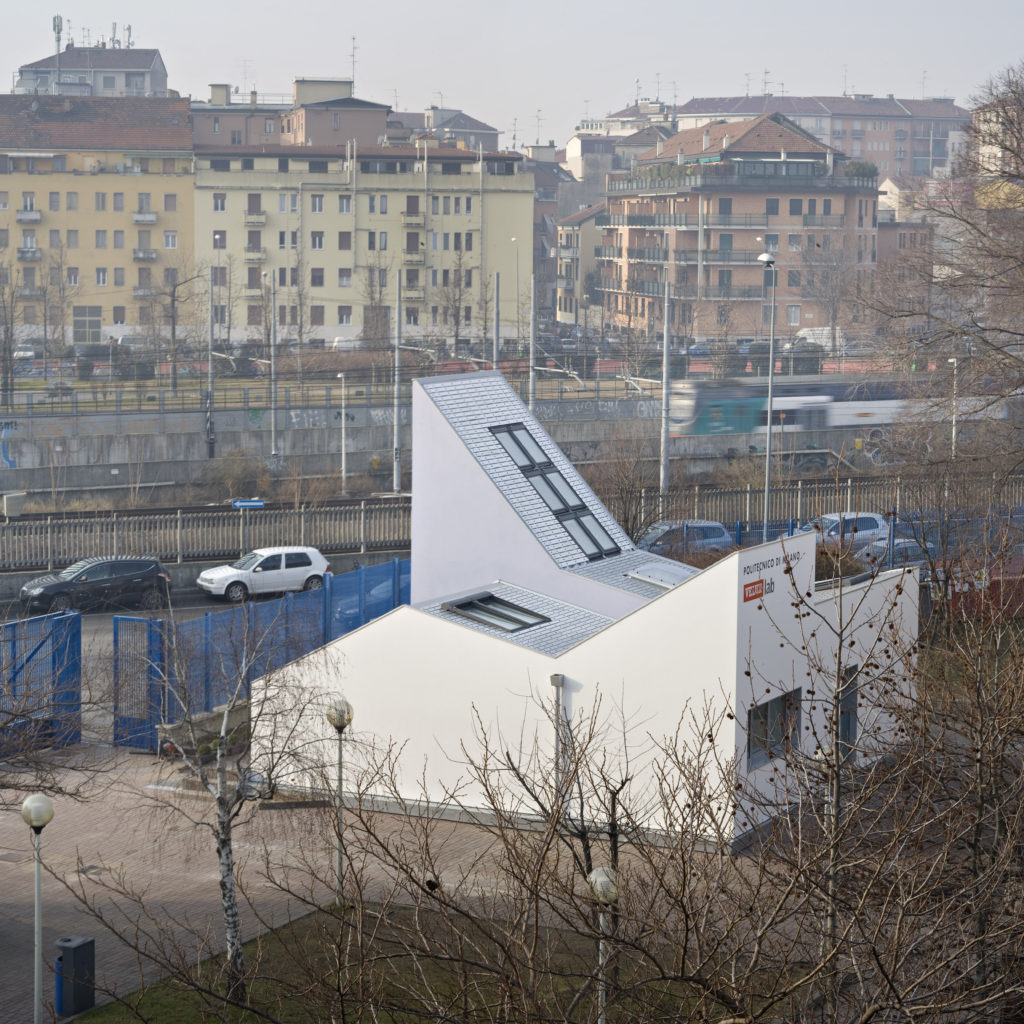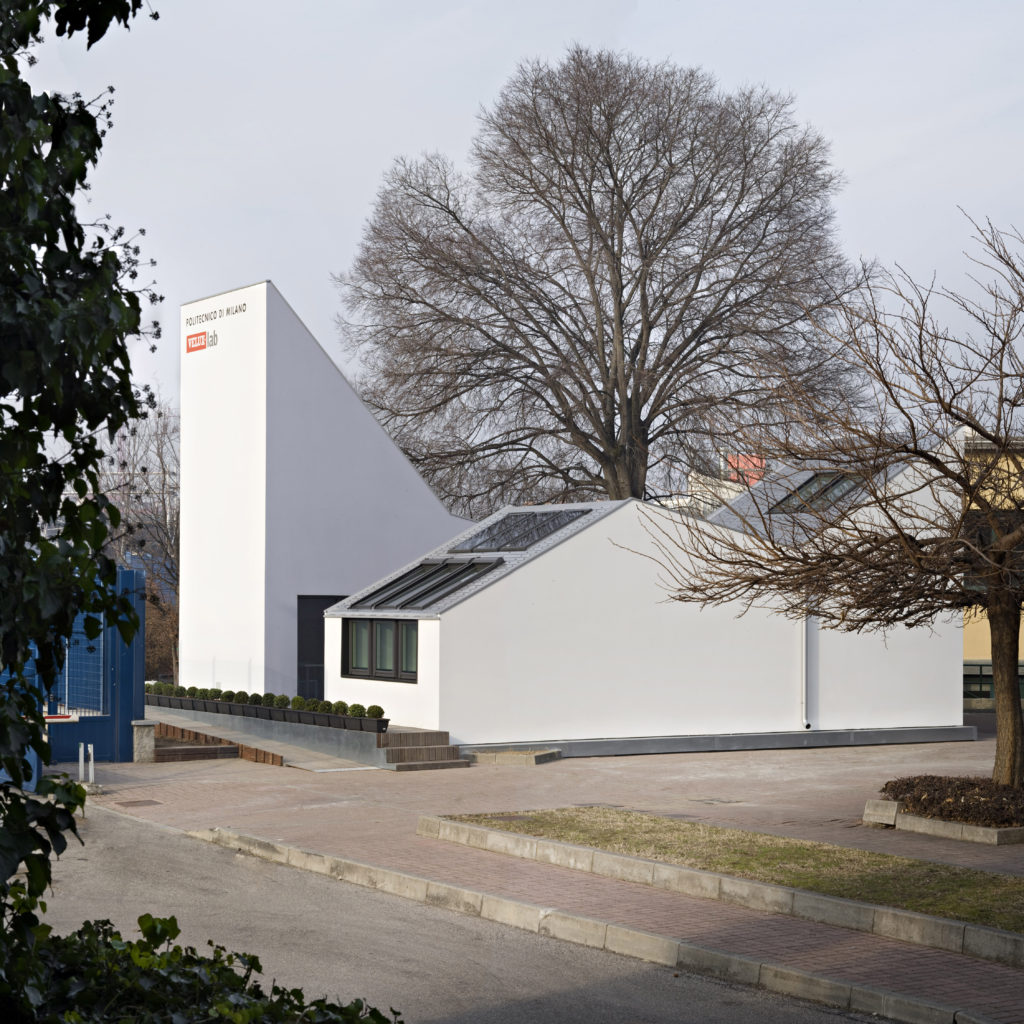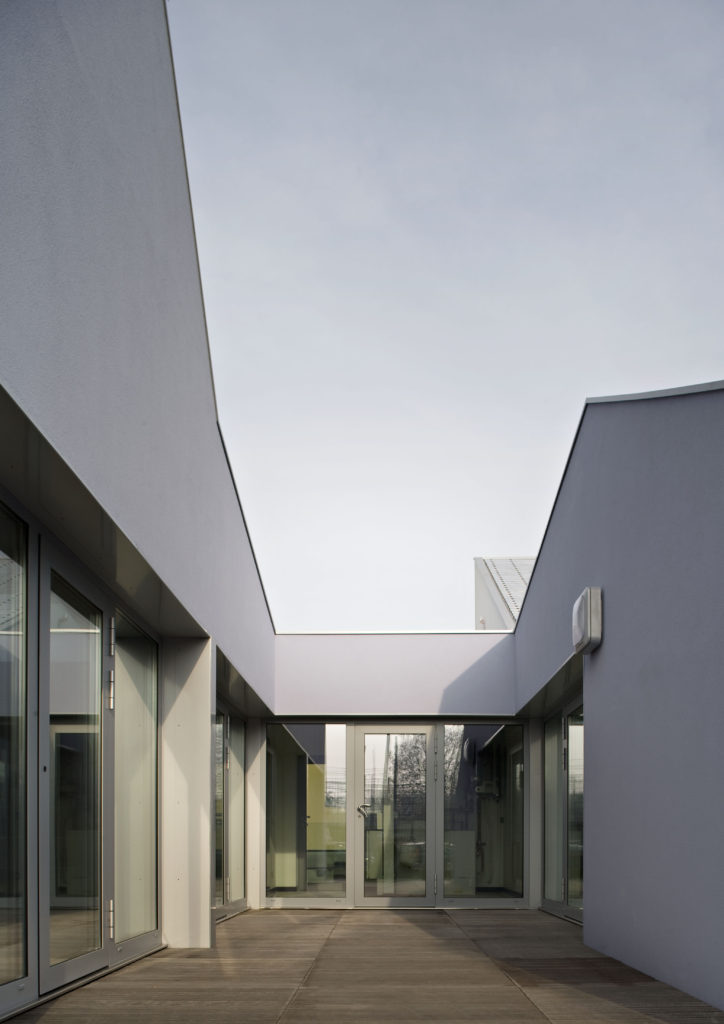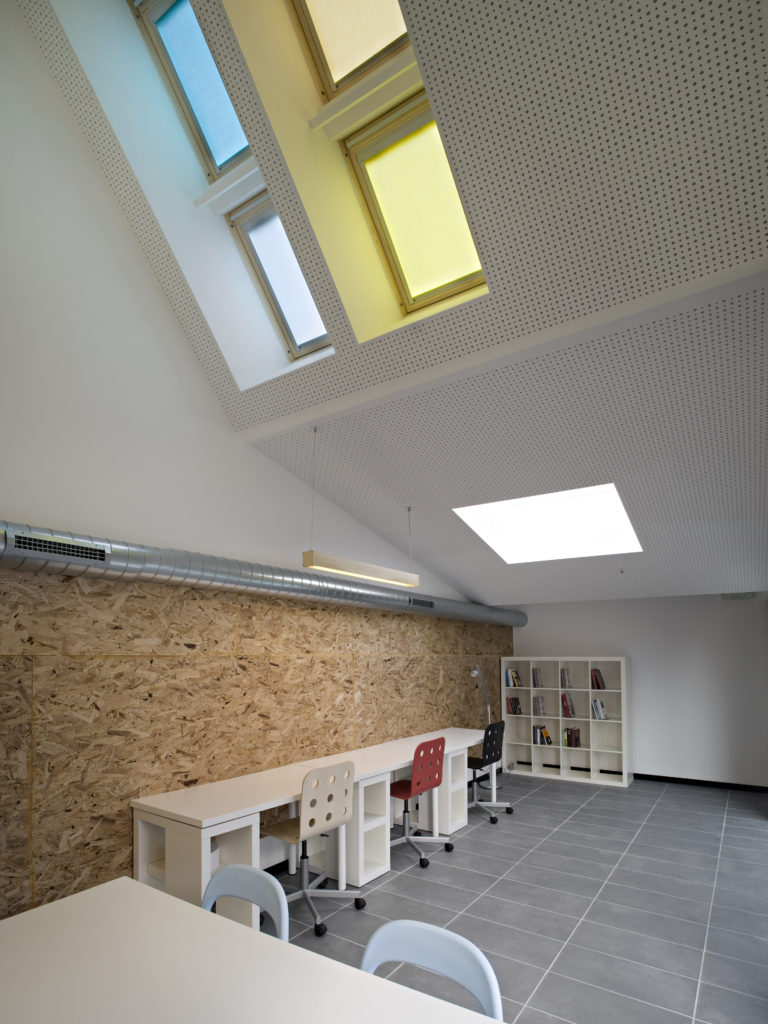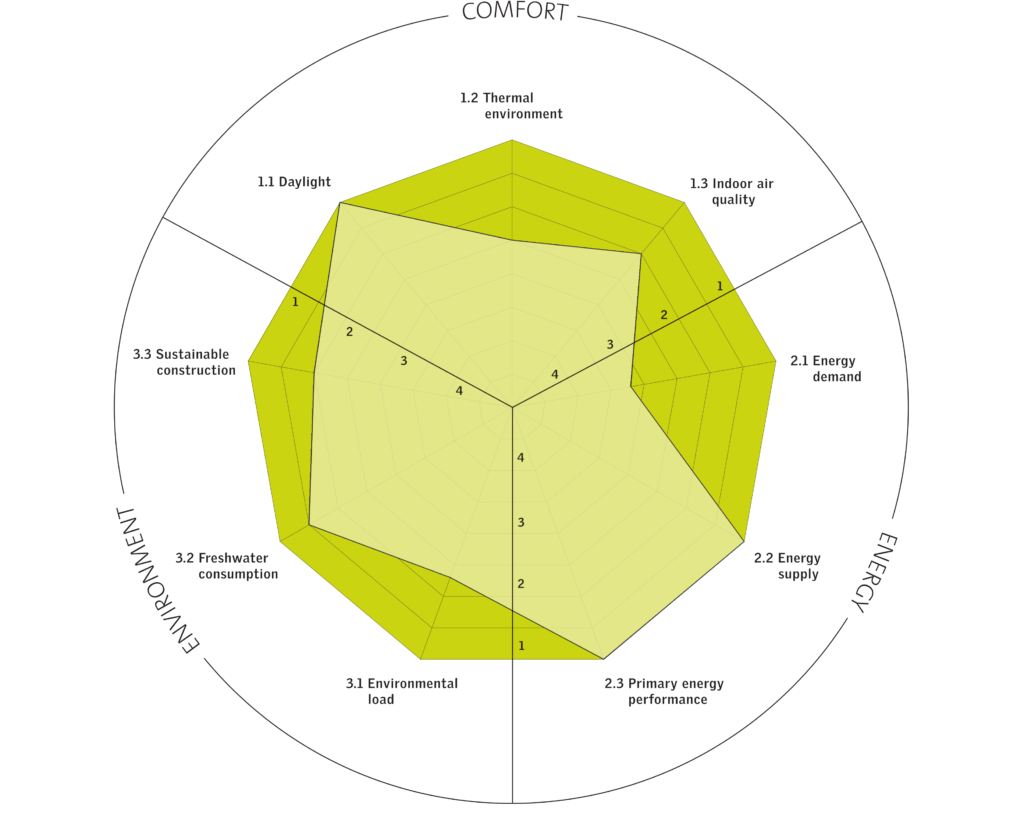VELUXlab
It is the renovation of the model home for Mediterranean climate Atika, designed by J.A.Cantalejo and A.Ronda from ACXT/IDOM studio for Velux. It was inaugurated in Bilbao (2007) and then replaced in Rome before (2008) and Milan later (2009). After this period Velux decided to give it to Politecnico of Milan in order to make out of this a new research centre for the University.
The renovation was followed by Atelier2 studio and by experts from Politecnico, the project was coordinate by Prof Manuela Grecchi and lead by Prof Marco Imperadori. Externally it looks like a normal building with white plastering as finishing, but it is the result of a complex analysis of the climate and of the needs of the building itself. In order to improve the energetic behavior, in fact, it has been calculated and analyzed in dynamic situation, that represents as best the real working conditions of the lab. Thanks to the software Trnsys, in fact, it was possible to investigate the real answer of the building to the climate stress and so regulate the design and the building strategies to the results.
The structure is the original one, from Atika, but it was implemented with other new materials and insulation according to the results of the simulation, in order to optimize the envelope and the building itself to the climate. The added materials are all innovative but recycled or recyclable. For example, due to the continuous operation of installation and dis-assemblage the facades were no more perfectly vertical, so a new metallic substructure was needed for the cladding and it was added on the old façades in order to regulate them. This new space (between the old and the new cladding) allowed the designer to fill it with insulating powdered materials taken from the waste of other processing. Recycled glass fiber panels were used for cladding and new insulations were added. The ceiling is made with gypsum and zeolite panels that clean the air and help in keeping the room healthy. The indoor comfort was the most important aspect that leaded the design of the lab: insulation makes the envelope air thigh and really performing in keeping the temperature stable, ceiling and wall cladding help in cleaning the air and maintaining the atmosphere healthy and safe for the occupants.
The shape itself is optimized for the hot season and it is active to the weather stress: the roof helps the natural ventilation and it maximizes the solar gains in winter and the shadows in summer. The energy request of the only building and envelope, without the services and the contribution of the renewable energy source, is 9.8 kWh/m3a for heating. The building is designed to answer instantly to the climate change and to reach naturally the indoor comfort for the users, only in the extreme season it needs help from the mechanical system of acclimatization and ventilation. It is equipped with HAVC with energy recovering (90%), air-water heat pump (7kWhp) and 3 solar panels with a 160 liters boiler that supply to the all need of hot water. The final energy demand is only of 3.82 kWh/m2a, making it a very smart and active centre of research. In the first project there was no PV system to cover the electric demand, but with the financial help of Velux, it is now equipped with a 2 kWp PV system, that covers all the request and makes VELUXlab answering perfectly to all the Active House Specifications.
Politecnico team is studying a new and innovative system for the automation of the windows, in order to optimize even more the natural behavior of the building itself. VELUXlab is the very first examples of active building in Milan and it is a centre for research but also a matter of research for the PhD students that are involved in studies on energy efficiency and innovation in the building sector. For examples the studies about the hybrid ventilation: thanks to VELUXlab it will be possible to analyze the behavior and the contribute of this system to the energetic efficiency of buildings. Hybrid ventilation is a new and innovative concept, matter of the latest research about efficiency and energy saving: it is based on the idea of integrated natural ventilation with the mechanical one only when it is needed, thanks to an automated calculating system that compares the outside weather conditions and the inner climate and, if it is necessary, calls in the mechanical ventilation system. This is possible thanks to a very advanced wireless control system, that is completely new and innovative: it is designed for this building by the Politecnico team from the Electronic Department. The monitoring system is really important because it gives all the data about the building behavior and, thanks to it, it will be possible to understand better the needs and the features of an Active House in a Mediterranean climate.
General coordination: Prof. Manuela Grecchi, rector’s delegate for buildings – Politecnico di Milano
Scientific coordination: Prof. Marco Imperadori, Department A.B.C. – Politecnico di Milano
Architectural and technologicl design and project management: Atelier 2 – Gallotti e Imperadori Associati, Milano
Technological development team: Prof. Marco Imperadori, Ing. Michele Sauchelli, Ing. Narghes Doust – Department A.B.C., Politecnico di Milano
Energy and services oordination: Prof. Mario Motta, Ing. Alberto Mauro – Energy Department, Politecnico di Milano
Wireless monitoring system team: Prof. Gianpaolo Cugola, Ing. Alessandro Sivieri – Department D.E.I., Politecnico di Milano
PV system: Ing. Arianna Brambilla – Department A.B.C., Politecnico di Milano
Financing: VELUX Italia Spa
Photo credits: Alberto Parise – www.albertoparise.com – alberto@albertoparise.com

